Redback spiders are found throughout Australia and are common in disturbed and urban areas.
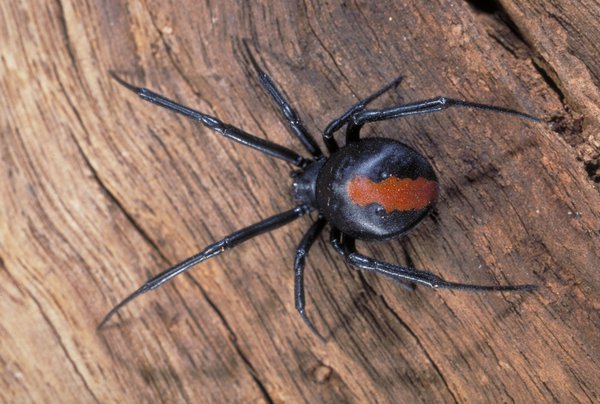
How Poisonous Is A Redback Spider?
The Redback Spider or Latrodectus hasselti, is one of the most venomous spiders found in Australia. Its venom contains a potent neurotoxin that can cause severe symptoms in humans, including pain, muscle weakness, nausea, vomiting, sweating, and increased heart rate.
While bites from a Redback Spider can be very painful, they are rarely fatal, and deaths are extremely rare. In most cases, the symptoms of a Redback Spider bite can be treated with antivenom, pain relief medication, and supportive care.
redback spider bite
Can You Survive A Redback Bite Without Antivenom?Redback spider bites are frequent but usually not fatal, even without medical treatment. The symptoms can last from several hours to a few days and include intense pain. The initial bite may cause only mild discomfort or irritation and sometimes goes unnoticed.
What Does A Redback Spider Bite Look Like?
Redbacks spiders are quite small, as are the bite marks they inflict. A redback bite will generally be a tiny pinprick puncture wound, or possibly two tiny punctures a millimetre or two apart. In some cases, the bite marks will not be clearly apparent, and the wound might simply appear as an aggravated sore. The bite location will generally be surrounded by an area of red, inflamed skin spreading out from the wound in a rough circle. The area will often show swelling and will generally be quite painful.
It’s common to sweat profusely after a redback bite. Within around 30 minutes, the pain and swelling from the bite will often have spread throughout the body. And after an hour or so, headaches, nausea and vomiting are also typical symptoms.
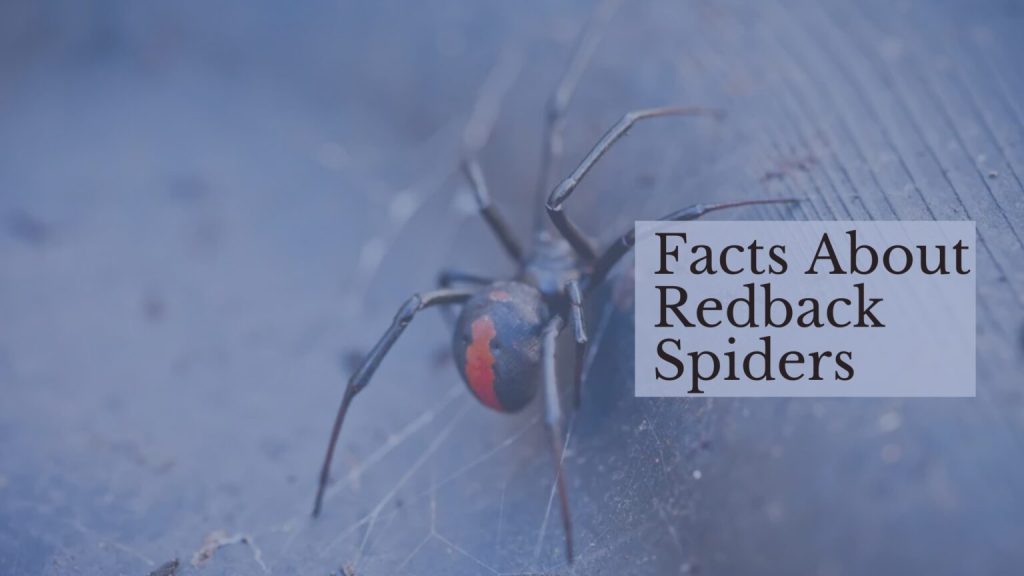
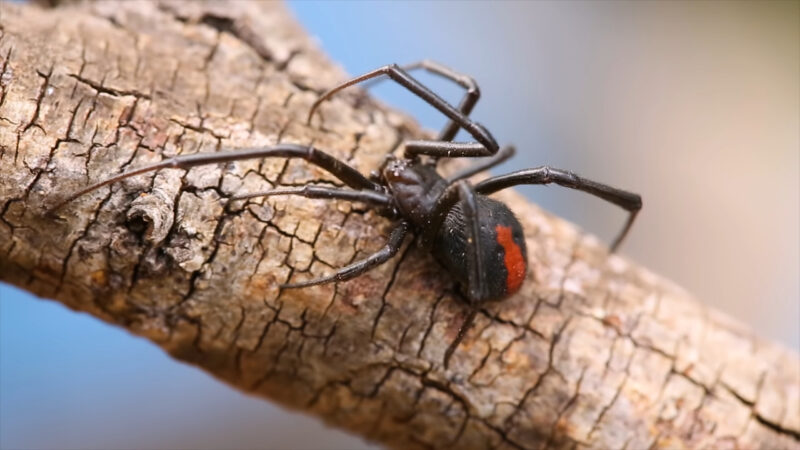
Redback Spider Identification
Redback spiders (Latrodectus hasselti) belong to the Family Theridiidae, which is found worldwide. The notorious Black Widow Spider (Latrodectus sp) of the United States is a close relative of the Redback Spider, and only differs in appearance by the absence of a red dorsal stripe. Other species of Latrodectus occur in Africa, New Zealand (the Katipo), the Pacific Islands, Europe and North and South America.
Female Redback Spiders are black (occasionally brownish) with an obvious orange to red longitudinal stripe on the upper abdomen, with the red stripe sometimes being broken, and an “hourglass” shaped red/orange spot on the underside of the abdomen. Juveniles have additional white markings on the abdomen. Females have a body about the size of a large pea and slender legs.
The males’ red markings are often less distinct. The body is light brown with white markings on the upper side of the abdomen, and a pale hour-glass marking on the underside.
Redback Spider Habitat
Redback Spider webs consist of a tangled, funnel-like upper retreat area from which vertical, sticky catching threads run to ground attachments. The Redback Spider favours proximity to human habitation, with webs being built in dry, sheltered sites, such as among rocks, in logs, shrubs, junk-piles, sheds, or toilets. Redback Spiders are less common in winter months.
Redback Spider Distribution
Redback Spiders are found Australia-wide and will live almost anywhere as long as there is adequate food, a sheltered web site and warm enough for breeding. They are especially common in disturbed and urban areas, in association with human habitation.
Feeding and diet
Insects are the usual prey of Redback Spiders, but they are capable of capturing quite large animals, such as male trapdoor spiders, king crickets and small lizards, if they become entangled in the web. Prey-stealing is also common, with large females taking stored food items from others’ webs.
Life history cycle
Once the female has mated, she can store sperm and use it over a period of up to two years to lay several batches of eggs. She spends much time producing up to ten round egg sacs (1cm diameter), which are white, weathering to brown over time. Each egg sac contains approximately 250 eggs and only one to three weeks need to pass before more eggs can be laid. These sacs are suspended within the web. Sometimes small ichneumonid wasps parasitise them, puncturing each sac with tiny holes. The young spiderlings hatch in two to four weeks. Spiderlings are cannibalistic and will eat unhatched eggs and other spiderlings. The spiderlings disperse by ballooning to another suitable nest site on long silk threads that are caught by air currents.
Females mature on average in about four months. The smaller male matures on average in about 90 days. Females may live for two to three years, whereas males only live for about six or seven months.
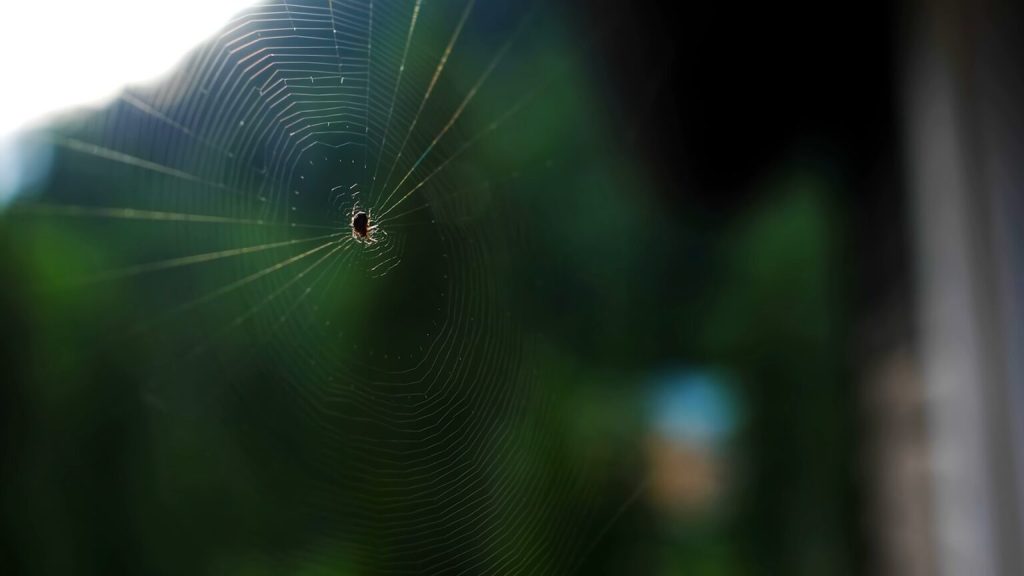
Breeding behaviours
Male Redback Spiders do not produce a web, but may be found on the fringe of a female’s web, especially during the summer mating season. The male has to make overtures to the female to discover whether she is ready to mate, which can prove fatal if she mistakes him for prey. It has been found that in order to occupy the female’s attention during mating, the male spider offers her his abdomen by standing on his head and ‘somersaulting’ his abdomen towards her mouthparts. The female begins to squirt digestive juices onto the male’s abdomen while the first palp is inserted. If he is not too weak, he will manage to withdraw, and then insert the second palp. She will continue to ‘digest’ his abdomen. Most males do not survive this process, which seems to be unique to Latrodectus hasselti.
Predators
Daddy-long-legs Spiders and White-tailed Spiders are known to catch and kill Redback Spiders.Redback spiders have several natural predators that help to control their populations. These include:
- Praying Mantises: Praying mantises are known to prey on redback spiders, as well as other types of spiders. They use their sharp forelegs to grab and hold onto their prey, before consuming them.
- Birds: Several bird species, such as butcherbirds and currawongs, are known to eat redback spiders. They use their sharp beaks to pick the spiders off their webs or other surfaces.
- Wasps: Some species of wasps are known to parasitize redback spider eggs, by laying their eggs inside the egg sac. The wasp larvae then feed on the spider eggs, effectively reducing the number of redback spiders that hatch.
- Other Spiders: Some larger spider species, such as huntsman spiders, Daddy-long-legs and White Tail Spiders are known to feed on redback spiders. They use their speed and agility to overpower the redback and consume them.
Danger to humans
Redback bites occur frequently, particularly over the summer months. More than 250 cases receive antivenom each year, with several milder envenomations probably going unreported. Only the female bite is dangerous. They can cause serious illness and have caused deaths. However, since Redback Spiders rarely leave their webs, humans are not likely to be bitten unless a body part such as a hand is put directly into the web, and because of their small jaws many bites are ineffective. The venom acts directly on the nerves, resulting in release and subsequent depletion of neurotransmitters.
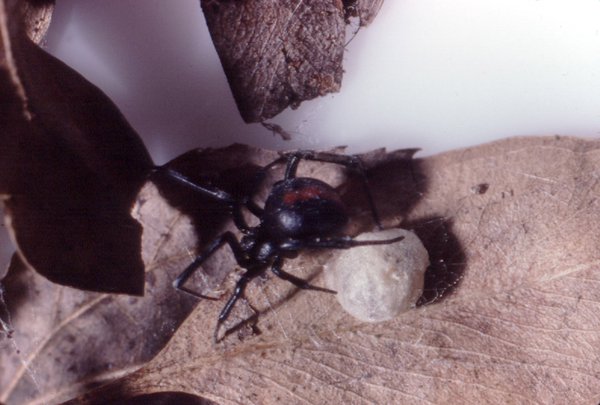
Common early symptoms are pain (which can become severe), sweating (always including local sweating at bite site), muscular weakness, nausea and vomiting. Antivenom is available. No deaths have occurred since its introduction.
Apply an ice pack to the bitten area to relieve pain. Do not apply a pressure bandage (venom movement is slow and pressure worsens pain). Collect the spider for positive identification. Seek medical attention.
Evolutionary relationships
It was once thought that the Redback Spider, Latrodectus hasselti, was a sub species of the Black Widow Spider but it is now known to be a distinct species.
Recent research on the DNA sequences of all recognized Latrodectus species indicates that the Redback is a distinct species, most closely related to the New Zealand Katipo, and probably an Australian native.
Redbacks have most likely become much more common since European settlers started providing them with lots of the kinds of places they like to make webs in.
Female Redback Spider
The female redback spider is a small and venomous arachnid that is native to Australia. It is known for its distinctive appearance, which includes a black body with a red or orange stripe on its back. The female redback spider is one of the most dangerous spiders in Australia, and its venom can cause serious health problems or even death in humans.
Physically, the female redback spider is larger than the male, with a body length of around 10mm. They have a round, bulbous abdomen, which is the most distinctive feature of their appearance. The abdomen is usually black, with a red or orange stripe on the upper side, and sometimes with additional white or yellow markings.
One of the most fascinating aspects of the female redback spider is their reproductive behaviour. They are known for their sexual cannibalism, where the female will sometimes kill and eat the male after mating. This is believed to be a way for the female to obtain the nutrients she needs to produce eggs. In some cases, the male may be able to escape after mating without being eaten.
Female redback spiders are also known for their intricate web-building abilities. They typically build their webs in dark, sheltered areas, such as under rocks or logs, or in crevices and corners. Their webs are made of strong, sticky silk, and they use them to catch insects and other prey.
The venom of the female redback spider is highly toxic to humans, and can cause symptoms such as pain, sweating, muscle weakness, and nausea. In rare cases, it can be fatal. However, bites from female redback spiders are relatively rare, as they are generally shy and will only bite in self-defence if they feel threatened.
Male Redback Spider
The male redback spider is a small and relatively harmless arachnid that is commonly found in Australia. Despite its small size, the male redback spider is a fascinating creature with unique physical characteristics and behaviours.
Physically, male redback spiders are much smaller than their female counterparts, with a male’s abdomen length of around 3-4 mm, compared to the female’s 10mm. They have a distinctive red or orange stripe on their back, which contrasts with their black body. The male’s legs are also relatively longer than the female’s, and they have a more slender body shape.
One of the most interesting behaviours of male redback spiders is their approach to mating. Unlike many other spider species, the male redback spider does not simply approach the female and mate with her. Instead, he performs a series of complex courtship rituals that involve vibrating his body and tapping on the female’s web to signal his presence. He must be careful during the approach, as female redback spiders are known to be cannibalistic and may attack and kill the male if he fails to impress her with his courtship.
Male redback spiders have a relatively short lifespan, typically living for only a few months after reaching maturity. During this time, they will mate with as many females as possible before they die. However, mating is not without its risks. In some cases, the male may be killed and eaten by the female after mating, especially if she is hungry or feels threatened.
What Is A Redback Spider?
The redback is one of the world’s most venomous spiders and shares the title of Australia’s most venomous spiders with the Sydney Funnel Web and is closely related to the venomous black widow spider found in the United States.
What Does A Redback Spider Look Like?
Redback Spiders are easily identifiable due to their unique physical characteristics. The adult female Redback Spider (Latrodectus hasseltii) has a black body with a conspicuous red stripe on the upper abdomen that resembles an hourglass shape. The female measures between 1 cm to 1.5 cm in body length, and she possesses relatively long, slender legs.
In contrast, the male Redback Spider is smaller than the female, measuring between 3 mm to 4 mm in body length. The male’s body is generally lighter in colour with white markings and does not have the noticeable red stripe on the abdomen.
Both female and male Redbacks feature a characteristic rounded abdomen and a small, oval-shaped cephalothorax (head and thorax). While their physical appearance may vary slightly, Redback Spiders are typically hairless with a glossy appearance.
Redback Spider Size
The Redback Spider (Latrodectus hasseltii) is a relatively small spider, with females typically measuring between 1 cm to 1.5 cm in body length, while males are smaller, ranging from 3 mm to 4 mm in body length. The female Redback Spider is easily recognisable due to its distinctive black body with a prominent red stripe on the upper abdomen, while the male is generally smaller and lighter in colour with white markings.
Redback Bite
Would you know how to respond to a spider bite? First aid training can teach you what to do.
The redback – known to scientists as Latrodectus Hasselti – is a particularly distinctive spider. They have long, spindly legs and large, distinctively spherical abdomen – often the size of a large pea, but sometimes as large as a blueberry. The body is usually jet-black and shiny, with a characteristic red stripe on the back of the abdomen from which the spider gets its name. This makes it one of the world’s most recognisable spiders, lending its name and iconic colour scheme to various brands and sporting teams.
In some cases, a redback’s body can be browner in colour, and the stripe can have more of an orange tinge.
For many years, scientists believed the redback to be closely related to widow spiders such as the black widow, but recent research has found them to be a distinct species native specifically to Australia – related more closely to the New Zealand Katipo spider.
It’s worth knowing that the description above is specific to the female redback spider – the best known. The male redback is considerably smaller, at around a quarter the size of the female. It also doesn’t have the large abdomen or red back markings for which the species is famous. They’re also far less venomous than the females and not dangerous to humans – hence they don’t get much press.
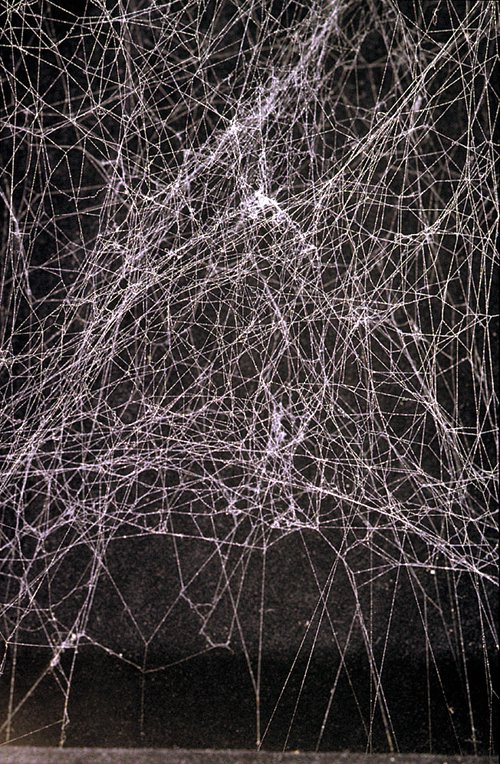
Where Does The Redback Spider Live?
Originally native only to parts of South Australia and Western Australia, the redback can now be found in every state across Australia. There have also been colonies discovered in Papua New Guinea, New Caledonia, New Zealand and they have even been found in Europe, Japan and America – most likely transported there accidentally by humans.
Redbacks are not migratory – they set up shop in one specific hunting ground and remain there most of their lives. In the bush, this would generally be in a dark hollow in a cluster of rocks or a hollow branch. However, redbacks are incredibly well adapted to (and show quite a preference for) human buildings and structures – which have an abundance of hiding places suited for them. In particular, their fondness for hiding under toilet seats has become something of an Australian cliché.
This is probably why the redback has spread so widely and become common since European settlement – our homes and buildings provide them with the perfect habitat. It’s also why redback spider bites are a reasonably common occurrence in Australia.
How Dangerous Is A Redback Spider?
The bad news is that, as mentioned above, the female redback is one of the world’s most venomous spiders and one of the few spiders known to have killed humans with a bite. Its venom is highly neurotoxic – meaning it attacks the nervous system. This causes intense pain, and in extreme cases, can disrupt the nerve signals enough to cause paralysis and even death.
The good news is that since the early 1950s, we’ve had an effective antivenom available. Since then, only one person (a Sydney man in 2016) has died of a redback spider bite in Australia. He’s also the only person in Australia to die of any spider bite since Funnel Web antivenom became available in the 1980’s.
That’s worth remembering – Australia has only had a single fatal spider bite in the last forty years. But it’s also worth remembering that death was a redback spider bite!
Despite their potent venom, redback spiders aren’t particularly aggressive. They prefer to hide from threats. Most bites occur when humans accidentally disturb their hiding places and possibly dislodge them. They also have relatively small fangs, so biting a human isn’t super-easy for them – our skin is quite thick from their perspective, and many redback bites on humans have little effect as they don’t puncture the skin.
FAQS
- What Does A Redback Spider Look Like?
The adult female is easily recognized by her spherical black body with a prominent red stripe on the upper side of her abdomen and an hourglass-shaped red/orange streak on the underside. Females usually have a body length of about 10 millimeters, while the male is much smaller, being only 3–4 millimeters long.
- What Is The Behavior Of A Redback Spider?
They are mainly nocturnal. The female redback lives in an untidy web in a warm sheltered location, commonly near or inside human residences. It preys on insects, spiders, and small vertebrates that become ensnared in its web.
- How Does A Redback Spider Capture Its Prey?
It kills its prey by injecting a complex venom through its two fangs when it bites before wrapping them in silk and sucking out the liquefied insides. Often, it first squirts its victim with what resembles ‘superglue’ from its spinnerets, immobilizing the prey by sticking the victim’s limbs and appendages to its own body.
- What Is The Mating Behavior Of Redback Spiders?
The Redback Spider is one of a number of arachnids that usually display sexual cannibalism while mating. After mating, sperm is stored in the spermathecae, organs of the female reproductive tract, and can be used up to two years later to fertilize several clutches of eggs.
- How Harmful Is A Redback Spider To Humans?
It is one of the few spider species that can be seriously harmful to humans. Its venom gives rise to the syndrome of latrodectism in humans; this starts with pain around the bite site, which typically becomes severe and progresses up the bitten limb and persists for over 24 hours. An antivenom has been available since 1956.
- What Is The Lifespan Of A Redback Spider?
Males live for up to six or seven months, while females may live between two and three years.
- Where Can Redback Spiders Be Found?
This species is widespread across Australia and is also found in Southeast Asia and New Zealand. It is particularly common in Brisbane, Perth, and Alice Springs. It is also found in close proximity to human residences.
- How Do Redback Spiders Reproduce?
Once the female has mated, the sperm is stored in one or both of her spermathecae. The sperm can be used to fertilize several batches of eggs over a period of up to two years. A female spider may lay four to ten egg sacs, each of which contains, on average, around 250 eggs.
- How Have Redback Spiders Spread To Other Countries?
The Redback Spider’s affinity for human-modified habitat has enabled it to spread to several countries via international shipping and trade. Furthermore, its tolerance to cold means that it has the ability to colonize many temperate countries with a winter climate cooler than Australia.
FINAL WORDS
The Redback Spider, a creature as fascinating as it is feared, is an integral part of our natural world. Their unique biology, behavior, and ecological role serve as reminders of the intricate web of life that connects all organisms.
Their remarkable adaptability to human environments underscores our shared space on this planet, necessitating a harmonious coexistence. Even as we exercise caution around these venomous creatures, let’s not forget to admire their place in the grand scheme of nature. They offer us a valuable lens to appreciate the stunning diversity of life forms and the complex relationships that sustain our world.
References
Simon-Brunet, S. 1994. The Silken Web: a natural history of Australian Spiders.Reed Books.
Preston-Mafham, R. 1991. The Book of Spiders and Scorpions. Quarto Publishing.
Pyers, G. 1999. Australian Animals: Spiders. Heinemann Library.
Forster, L. 1995. The behavioural ecology of Latrodectus hasselti (Thorell), the Australian Redback Spider (Araneae: Theridiidae): a review. Records of the Western Australian Museum Supplement No. 52: 13-24.
York Main, B. 1976. Spiders. The Australian Naturalist Library, Collins, Sydney.
Garb, J. E., A. Gonzalez, & R. G. Gillespie (2004). The black widow spider genus Latrodectus (Araneae: Theridiidae): phylogeny, biogeography, and invasion history. Molecular Phylogenetics and Evolution. 31, 1127-1142.
